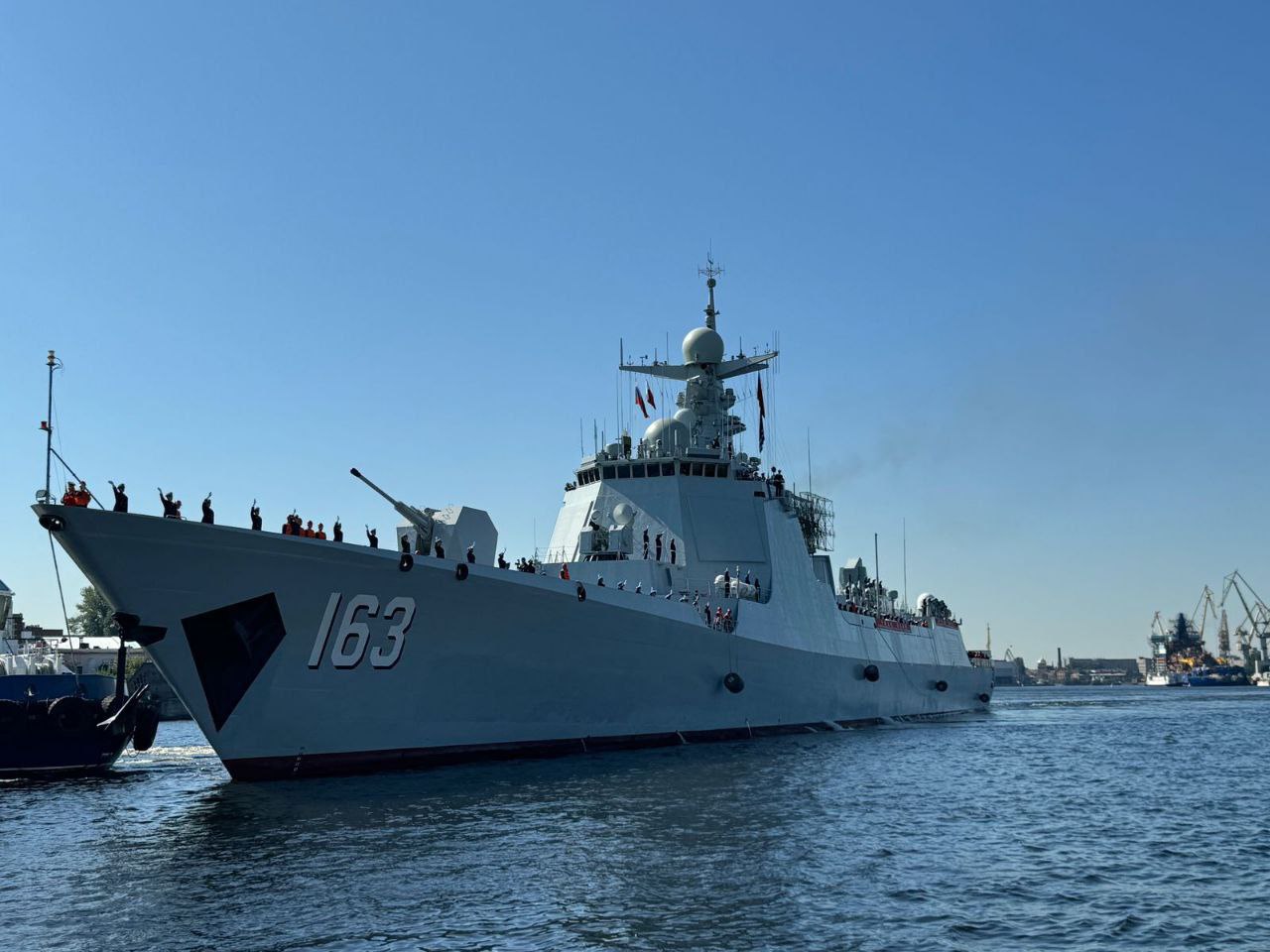Two Chinese navy vessels, observed by NATO along its northern borders, have arrived in Russian waters this week, showcasing a display of unity between Beijing and Moscow.
The Type 052D guided-missile destroyer, called Jiaozuo by China and Luyang III by NATO, along with the Type 903A replenishment ship, Honghu, are set to participate in a naval parade alongside Russian and other foreign ships on Sunday. The Jiaozuo, weighing 7,500 tons, is the most advanced Chinese naval vessel to attend these celebrations.
Russia’s Navy Day, typically marked on the last Sunday of July, will be scaled down this year due to security concerns, as stated by officials in St. Petersburg, the host city. Normally, top leaders including President Vladimir Putin watch the parade from the nearby Kronstadt island.
On Saturday, the Jiaozuo and Honghu were spotted sailing past Denmark’s Baltic islands. Having been engaged in an anti-piracy mission in the Horn of Africa, the ships navigated the Mediterranean Sea to reach Russian shores on Monday.

In a Telegram post the following day, the external relations committee of St. Petersburg mentioned that the commanding officer of Jiaozuo was met by city officials and the commander of the Leningrad Naval Base, a part of Russia’s Baltic Fleet.
Social media images displayed the destroyer arriving at the Lieutenant Schmidt Embankment before docking on Vasilyevsky Island along the Neva River. The Honghu, a fleet logistics ship, was seen near Kronstadt on Tuesday, though not explicitly mentioned in the post.
China’s Defense Ministry did not comment on the military exchange despite numerous requests. However, on Wednesday, state broadcaster CCTV confirmed the weeklong visit of Jiaozuo.
The Chinese vessel received a warm welcome from the Russian public, as well as from overseas Chinese residents in St. Petersburg, including staff from China’s consulate, as per the TV report.
The Jiaozuo is slated to partake in a parade rehearsal on Thursday before engaging in the main event later in the week. This marks the first Chinese navy ship to participate in the celebrations in five years, CCTV reported.

China and Russia have conducted multiple military exchanges, with their joint exercises increasingly focusing on specialized drills for their air force and naval units, especially in the Pacific region.
Despite Russia’s conflict in Ukraine, Beijing continues to strengthen its ties with Moscow. Russia heavily relies on the Baltic Sea for its economic cargo shipments, while their navy uses it as an access point to the wider Atlantic Ocean, vigilantly watched by neighboring NATO countries.
Russia’s Kaliningrad exclave, housing its Baltic Fleet base, is under constant surveillance from varied directions.
On Chinese social media platform Weibo, a user commented on Beijing’s decision to send a warship to St. Petersburg, noting, “Chinese navy vessels have participated in Russia’s Navy Day multiple times, but this time holds special significance.” The user added, “With Finland and Sweden joining NATO, the Baltic Sea has become a NATO-dominated territory. Navigating this waters and reaching the Neva River for Navy Day is an extraordinary accomplishment.”
